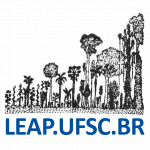DiversiPlant: Practical WebApp to combine compatible species in agroforestry & restoration
[versão em Português]
DiversiPlant is an app project aiming to help agricultural, forestry and restoration practitioners to select combinations of useful plant species that are likely to thrive when densely intercropped in the same space at the same time. From thousands of species adapted to the local climate, each project or location can then flexibly customize species filtering to considering primarily native and threatened species, with locally important socioeconomic uses, ecological services and to fill nutritional gaps. This versatile customization from place to place is expected to help reverse the ongoing biological homogenization across landscapes, while addressing the most pressing needs of local people and ecosystems.
To stem biodiversity loss we should not prescriptively repeat the same narrow set of dominant plants across farms, territories and countries. CIFOR-ICRAF tools help filter among tens of thousands of tree species, those best suited for local environmental conditions (TreeGOER) and socioeconomic demands (GlobUNT) for any farm or project, including rare, neglected, promising and native species. To simultaneously enhance multiple provisioning and regulating ecosystem services, intercropping saves space, inputs and boosts productivity, but incompatible species combinations and operational complexity are major constraints on adoption. To avoid competition, we are building an online decision tool to choose compatible combinations of trees and crops, while allowing to adjust the level of diversity manageable for each farm or project. To broaden applicability across environmental and socioeconomic contexts, intercrop assembly rules minimize overlap of fundamental ecological niches based on plant traits obtainable for thousands of species. To fill data gaps in key niche dimensions (e.g., shade tolerance) and ensure agronomic and silvicultural practicality, we integrate scientific trait sources with agroforest practitioners’ experience through citizen science knowledge sharing. Open, interactive visualization and direct links to detailed management recommendations for each species through the switchboard aim to facilitate the conservation of threatened biodiversity by sustainable use.








